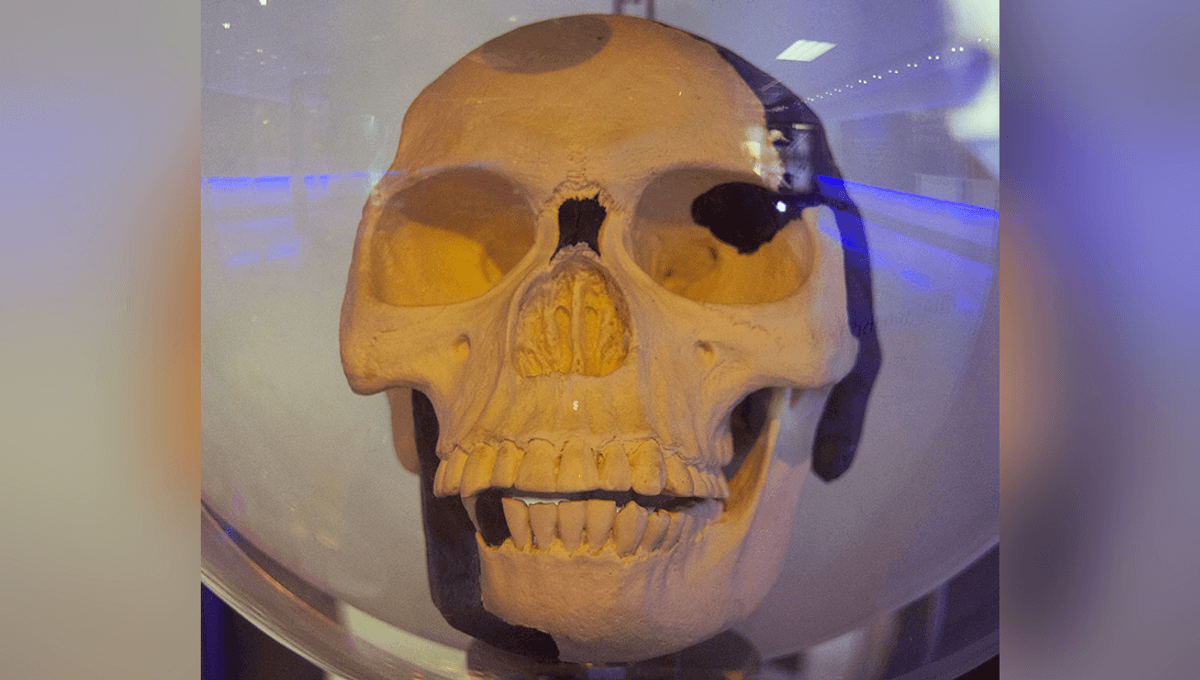
In 1912, a British amateur archaeologist told the world he had made an important discovery in Piltdown Village, Sussex, England. According to Charles Dawson, who contacted the Natural History Museum with the information, while exploring Pleistocene gravel beds he had found an unusual human-like fragment of skull.
Dawson and Arthur Smith Woodward, keeper of geology at the museum, returned to the gravel bed, finding more fragments of a skull, as well as a jawbone, primitive tools, and a set of teeth.
The bone fragments were unusual, – or at least they would be if they all belonged to the same creature. The skull was remarkably human-like, whilst the jawbone was astonishingly similar to that of an ape. In a terrible stroke of luck, the jaw joint that would have settled whether the bones belonged to the same creature had apparently been lost during fossilization.
Nevertheless, Smith Woodward reconstructed the bone fragments and presented the discovery at a Geological Society meeting that same year, telling the society that he believed it was evidence of a human ancestor that had lived 500,000 years ago.
While many in the US and mainland Europe were skeptical of the find, in Britain, it was widely accepted that the bones belonged to one individual. The ape and human-like characteristics of the bones were exactly what scientists were expecting to find in a “missing link” between humans and our ancestors, and for a time many believed this is what it was.
But, as testing would reveal decades later, it really wasn’t. In 1953, scientists used fluorine dating to reveal that the bones were not the same age. Unless the individual was losing skull fragments and jawbones many years apart, in the exact same location, they did not all belong to one individual. Further investigation would reveal that the bones had been altered, including being repaired with putty and being filled with pebbles to make them appear like weightier, fossilized bones. The bones fit with what scientists expected to find in a missing link because they had been designed like that.
Even further into the future, a team attempted to solve the mystery still surrounding the Piltdown man: who was involved in the hoax? Was Smith Woodward involved, or had Dawson – or others – planted the bones to be found?
The team determined that the ape-like bones came from a single orangutan, which had likely been raised in Borneo, given the unavailability of orangutans in Europe at the time. Meanwhile, the human bones likely came from up to three medieval humans.
“The consistency in the [modus operandi] observed in the specimens, and the use of a limited number of specimens to create both the Piltdown I and Piltdown II material, are indicative of a single forger,” the team wrote in the study, naming Dawson as their prime suspect. “Not only did Dawson have the access and connections necessary to obtain the specimens, he was also a great networker, and would have known what the British scientific community was anticipating in a missing link between apes and humans: a large brain, an ape-like face and jaws, and heavily fossilized materials that indicated great antiquity. As a long-established collector, he would also have known what to add in the form of fossil mammals and stone tools to testify to its antiquity.”
The team pointed to Dawson’s career, in which he published many papers but did not advance, as possible motivation, and a letter to Smith Woodward which read “I have been waiting for the big ‘find’ which never seems to come along”. And then, for a brief moment before it was exposed for all to see, it did.
Source Link: Piltdown Man Hoax: Mystery Of The "Missing Link" Fossils Found In 1912 England